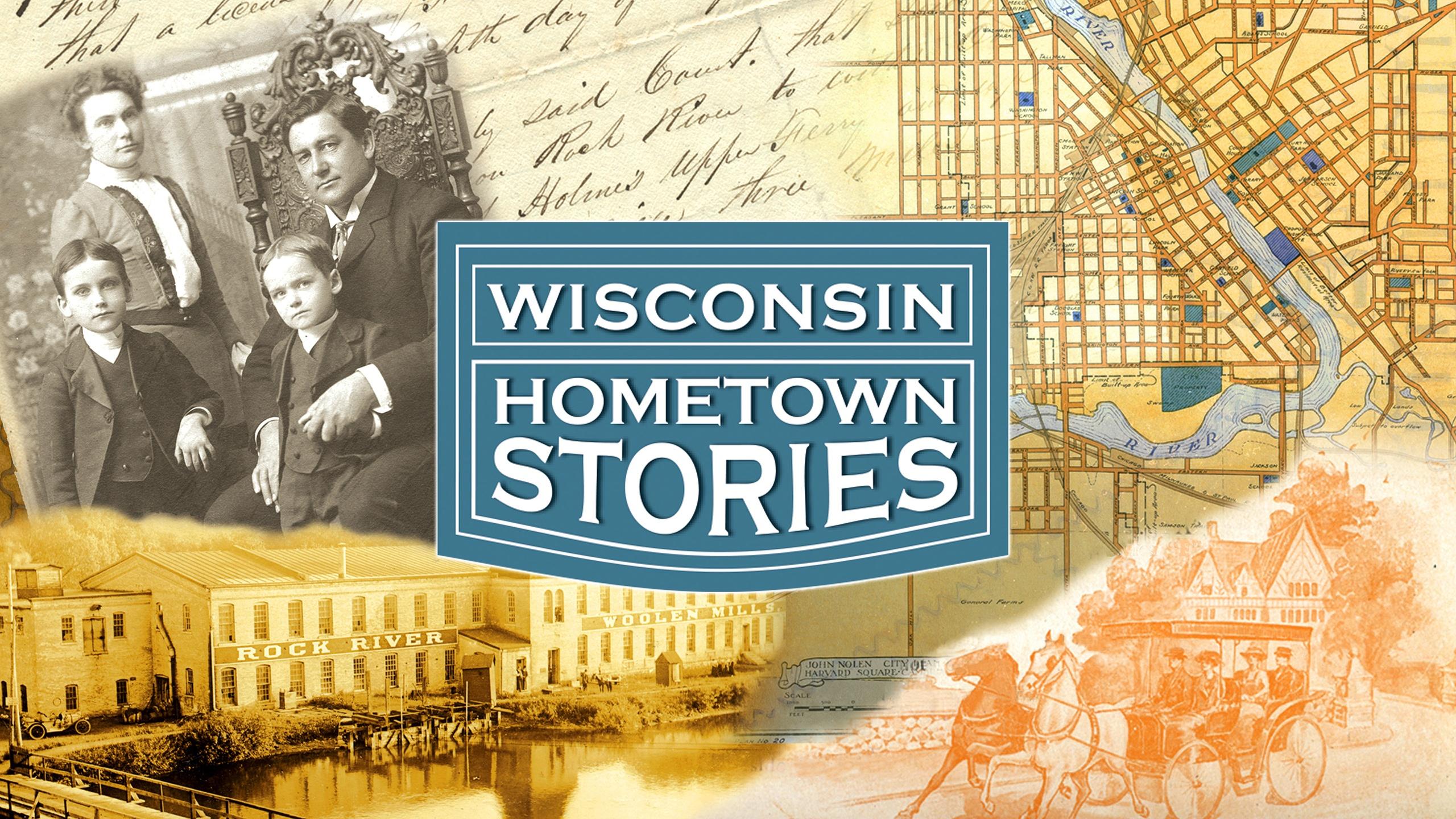Wisconsin Public Television
Transcript: In Wisconsin #917
Air Date: March 3, 2011
Patty Loew:
Hello and welcome to In Wisconsin. I’m patty. This week, losing your voice could mean losing your job.
Woman:
I was really concerned that I wouldn’t be able to teach anymore.
Patty Loew:
See how a University of Wisconsin clinic gives hope to those struggling to be heard. And feel the heat, as we take you inside a raging fire. It’s the stage firefighters fear most. And from fire to ice. Black ice.
Man:
At this time of the year, we will get a lot of inquiries.
Patty Loew:
It’s so crystal clear that you can see fish beneath the surface. And a preview of the new special called Our Birds. Next on In Wisconsin.
Announcer:
Major funding for In Wisconsin is provided by the people of Alliant Energy, who bring safe, reliable, and environmentally friendly energy to keep homes, neighborhoods and life in Wisconsin running smoothly. Alliant Energy. Were on for you. And Animal Dentistry and Oral Surgery Specialists of Milwaukee, Oshkosh and Minneapolis. A veterinary team working with pet owners and family veterinarians, providing care for oral disease and dental problems of small companion animals.
Patty Loew:
We begin this week with something most of us take for granted. Our voice. For many professionals like me, losing your voice or coping with hoarseness is more than an inconvenience. It can result in the loss of income, or even a career. And you may be surprised to learn just how many people suffer from vocal problems. There’s a highly specialized clinic at UW Hospital that works with patients ranging from singers to everyday folks in Madison.
Liz Koerner:
Sarah Grodey is a teacher who works one-on-one. She travels to the homes of special needs children like Ryan Schumaker. It’s a job that hinges on her ability to speak and sing.
Sarah Grodey:
(singing song to student)
I work with kids with a variety of needs and I have to use my voice a lot.
Liz Koerner:
She struggled since high school with hoarseness, at times completely losing her voice. So far, shes undergone two vocal cord surgeries in order to continue working in the jobs that she loves.
Sarah Grodey:
A couple of years ago, I was really concerned that I wouldn’t be able to teach. My voice had really given out. I was discouraged that I was going to have another surgery, and that may mean limited use of my voice.
Liz Koerner:
Then she heard of a clinic at University Hospital called The Voice and Swallow Clinic. Among its services, is a form of physical therapy for the voice. Clinic director Susan Tevo, says voice problems like Grodeys are quite common.
Susan Tevo:
We know that 29% of the population will have a voice disorder at least once in their lifetime.
Liz Koerner:
After a physician ruled out disease like cancer, which requires surgery, a speech pathologist began voice therapy.
Sarah Grodey:
When I first started in voice therapy, I didn’t know what they were doing. Different sounds, up and down. It was like to use my vocal cords in a different way.
Liz Koerner:
Grodeys problem stemmed from allergies. Another common health condition that causes hoarseness is acid reflux. But many people simply talk in a way that irritates the vocal cords.
Woman Radio Announcer:
His debut novel takes place in Minor Universe 31…
Liz Koerner:
Anne Strainchamps is one of the voices heard on the Public Radio program, To The Best Of Our Knowledge.
Anne Strainchamps:
My voice developed what I call a gravely sound. It’s hard to hear your voice sound ugly, or have the engineers say to you, can you project anymore? And you have to say, no, I can’t!
Susan Tevo:
So, when someone is talking really deep like this and theyre creating a lot of stress and tension here, that’s going to be more likely to cause a problem with their voice.
Anne Strainchamps:
So, one of the things they had me do is hum, like this. (hums from high to low tone) And pay attention to where I feel vibration. When you can feel your teeth vibrate, stop. That’s my natural range. If you said, where is your voice coming from? Its not coming from here, (touches voicebox), it’s all up here. All of a sudden, that graveling sound was gone. It was amazing.
Sarah Blakeslee:
Close your mouth a little bit and go, mm mm mm.
Liz Koerner:
One of the high-tech tools used to diagnose voice problems is called stroboscopy. Sarah Blakeslee is a speech pathologist at the clinic.
Sarah Blakeslee:
Stroboscopy is a microphone that picks up the pitch of the patients voice, and then synchronizes the strobe light to blink at just the right speed, so it makes it looks like the vocal chords are moving in slow motion, so you can get a little bit of a sense of how well the tissue is vibrating, sort of see how the vocal chords are closing, see if theres any gaps anywhere, see if theyre vibrating symmetrically.
Liz Koerner:
16-year-old Alyssa Yokum completely lost her voice after a cold. Yokum was a singer and was in a hurry to get back on the stage.
Alyssa Yokum:
I like doing Show Choir and musicals and stuff. So, its really important to me.
Liz Koerner:
One-third come in after they get a cold.
Sarah Blakeslee:
What happens is they get stuck in sort of this inappropriate pattern of muscle tension where you kind of get used to talking in this back, scratchy voice. Then the cold goes away and your muscles are kind of just stuck in this pattern.
Susan Tevo:
If youve broken your leg, and you still run on it, you use other muscles to adapt, then you would have to learn how to use your leg the normal way again. Same thing with a cold.
Liz Koerner:
From teachers to broadcasters, to the many non-professionals who struggle with their voice, the UWs Voice and Swallow clinic offers hope.
Sarah Grodey:
Voice therapy, it makes me really emotional, has helped me be confident and comfortable with my voice. And I just don’t have those problems anymore.
Patty Loew:
The UW Voice and Swallow Clinic is one of the largest and oldest voice clinics in the country. They see on average 600 patients a month from far away as India, Iceland, and England. The help patients get at the clinic can sometimes prevent the need for surgery.
In any emergency, quick communication is key. For firefighters, it could be a matter of life and death. To understand that firsthand, we take you into the heart of a raging, smoke-filled fire. This week, videographer Will Salzman continues his occasional series, Unseen Places, to put you on the front lines as firefighters train in the Town of Springfield.
Frederica Freyberg:
Baptism by fire. Tasting the heat. Taking the shine off. It’s known by many names, but technically, it’s called a controlled training burn. It’s a rite of passage that firefighters all over the world experience as part of their training. It’s this environment, the heat, the smoke, the chaos that helps train firefighters to prevent the most dangerous stage of a fires life. If unchecked, the temperature of a room on fire surpasses 1,200 degrees. When this happens, everything, even the carbon monoxide in the very air itself ignites. It’s the stage firefighters fear most. It’s called flashover.
Firefighter:
It’s going to flash! Hit it.
Frederica Freyberg:
The morning of the training burn begins with the briefing, where Assistant Chief Gary Gillitzer passes on details of the day’s activities.
Gary Gillitzer:
This, weve got a burn event today. This, weve got to burn today.
Frederica Freyberg:
Once at the location of the planned burn, crews position the equipment. A supply of water is established. Hoses are run. And the house is carefully prepared for the burn. Before the fire is lit, everyone tours the structure one last time, exits and escape routes are pointed out.
Gary Gillitzer:
Okay, bedroom, bedroom. Therell be no burns upstairs. This is what is up here. Okay?
Frederica Freyberg:
Now it is time for the firefighters to don their air packs. It’s called packing up. The last step before entering the house is a buddy check. Each firefighter has to be checked to ensure that no bare skin is exposed. Finally, it’s time. Everyone is ready. The fire has been lit, and the first attack team makes entry.
Weve all seen fires in movies, flames leaping and dancing in a perfectly clear room. This is the reality. It’s incredibly hot. Its dark. And its nearly impossible to see. It is for this reason that thermal imaging cameras were created. Not only do these tools show firefighters exactly where the fire is, they help them locate victims in a fraction of the time that it used to take.
In many ways, fire is a living thing. It eats, grows, reproduces and breathes.
Firefighter:
It’s coming and going. Coming and going.
Frederica Freyberg:
A lot of time is spent during these burns, not only to learn to cope with the environment, but studying how a fire behaves.
Firefighter:
You switch off. Get out and switch off.
Frederica Freyberg:
Finally, when a fire has grown too hot for firefighters to safely attack it directly, the Chief Aaron Harris calls for a technique called a blitz attack.
Aaron Harris:
Go at this from the original door. You are going to have to knock the fire back out of the way. Blitz when you can.
Frederica Freyberg:
Many lessons are learned during these training burns, both technical and personal. No one really knows how to attack a fire until they have done it. No one really knows what they can face until they felt the heat. It’s only through intensive and realistic training that firefighters learn to control not only fire, but also their fears.
Aaron Harris:
A blitz attack is really an offensive attack. You’re going after it to knock it back to get inside. We did it.
Patty Loew:
We take you to fire to ice. Black ice. From blizzards to ice storms, old man winter zeroed in on Wisconsin this year. And through it all, we discovered something unique. A lake polished into a brilliant gem by strange weather patterns. As part of our Quest environmental reporting project, we explore the phenomenon known as black ice with John Magnuson, UW emeritus professor of zoology and limnology in Madison.
John Magnuson:
So many people have noticed that the ice is so clear on lake Mendota this year. It’s not usually crystal clear when you get out on walk on Mendota, but it is this year. We often call this crystalline ice, which you can see here, black ice. The ice isnt black. It’s like a window pane. It’s transparent, so people see all sorts of things. At this time of year, well get a lot of inquiries, like, I saw this under the ice, what’s wrong? I saw this under the ice. I found my anchor.
Why do we have clear ice this winter when typically we don’t? We had a little bit of rain, and a January thaw, and then a little bit of snow that was on top melted and got rained on and then that froze a new layer on top of the ice. Again, it was ice rather than frozen slush that was forming.
The word ice in Greek is crystal. And it’s spelled a little differently, but crystal. You tend to think of glass crystal or something that’s crystal clear. Now, these bubbles happen to be from oxygen bubbles from photosynthesis of this algae before it goes to the bottom.
In fact, the lake as you just discovered is active under there in the winter time. Lots of life going on. So, when we study the lake, we study them year round.
Patty Loew:
That report was generated by our graphic artist Jen Hadley who discovered it while with her daughter Sophie. The report you just saw is part of a much larger multimedia partnership with the Wisconsin Educational Communications Board, Wisconsin Public Radio and PBS stations across the country. The purpose is to highlight environmental reporting, spark discussion and inform. Wisconsin Public Television, along with our partners, has developed a web site called Quest Wisconsin. Reporter Andy Soth shows us how it works.
Andy Soth:
What will you find at QuestWisconsin.org? If you like In Wisconsin stories about Wisconsins environment, and the way Wisconsinites interact with it, and want to see how people get involved
Woman:
It feels like you’re making a difference. It just feels like youre doing something right.
Andy Soth:
Quest Wisconsin can connect you, not just within the broadcast coverage, but added exclusives and soon, radio reports and content for the classroom, QuestWisconsin.org, stories and more about Wisconsin’s environments.
Patty Loew:
For additional information about our environmental reporting project, go to QuestWisconsin.org. There, youll find links to new research and reports. We also wanted to tell you about another exciting project we have been working on. For more than two years, Jo Garrett and videographer Frank Boll have been working on a documentary special called Our Birds. It’s an adventure that took them into every corner of our state and deep into central America. Jo joins us this week with a preview.
Jo Garrett:
Thanks, Patty. Our Birds is a show that looks at the problems faced by what are called neotropical migrants. Those are the birds like the Baltimore Oriole, that migrate from their wintering grounds in the southern hemisphere to their breeding grounds here in Wisconsin. They face enormous challenges. So, we wanted to examine the efforts of people in both hemispheres who are working so hard to save them. People like Wisconsin conservationist Craig Thompson, who has an innovative approach to save the bird habitat in Costa Rica.
Thompson works as a regional land program supervisor.
Craig Thompson:
Oh, my gosh! Its a Swainsons Thrush!
Jo Garrett:
For the Wisconsin Department of Natural Resources. This is his beat, the Mississippi River side of the state. He knows birds and conservation. And he’s traveled the world in his time off putting the two together in a new way.
Craig Thompson:
We’re calling it conservation birding trips. What we do, is provide trips basically at cost. So we’re offering bargain basement prices, but the catch is that every birder, every participant that goes out has to donate $500 per person to a non-profit conservation organization. And of course, the primary emphasis of that is to save the wintering habitat for those birds that migrate from Wisconsin down to Latin America.
Jo Garrett:
Wintering habitat. Home base, really, for these tiny birds for most of the year.
Woman:
It’s the Philadelphia Vireo.
Jo Garrett:
And different neotrops need different habitat. Red-eyed vireos prefer living up in the canopy of the rain forest. It’s watery coastal mango forest for the Prothonotary warbler. Weedy areas at the edges of agricultural fields for the Indigo Bunting. The Eastern Phoebe likes to hang by rivers and the streams. Places that are also valuable and vulnerable.
Craig Thompson:
The clock is ticking. The population of Latin America is expected to increase by 100 to 360 million over the next 40 years. That’s a lot more people in a very finite land mass. They need clothes. They need food. They need shelter. And theyre going to want all the things that we have in terms of lifestyle, televisions, washers, dryers, refrigerators. The clock is ticking and we really have a very limited window to try to protect these remaining big blocks of forest so we can hang onto the birds that breed up in the States and then winter down here. Every acre that we protect makes a big difference.
Jo Garrett:
We traveled to both Costa Rica and Panama to profile, not just Thompsons program, but also the work of scientists and conservationist in both of those countries. We captured some really fascinating information about Wisconsin businesses and non-profits who are sponsoring work down there.
Patty Loew:
I understand these neotrops also face pressures here in our state?
Jo Garrett:
Oh, yeah, enormous obstacles, Patty. Its a very tough situation for them. One of the biggest problems that they face is the problem in migration is the problem of window collisions. Its estimated that every year, up to a billion birds die from what are called window strikes. It’s a problem in Milwaukee, where Scott Deo, from the Wisconsin Humane Society is on the lookout for dead and injured birds, like a little Canada Warbler.
Is it dead or alive?
Scott Deo:
Alive! Fortunately, alive, which is wonderful.
Jo Garrett:
The little warbler Deo found is alive. Deo bundles the bird into a simple paper bag. It’s dark and safe, and the bird wont injure herself if she flutters about and tries to fly. And it’s off to the Humane Society.
Woman:
Window collisions, well look for eye injuries and blood coming from the mouth. You can see this eye is a little bit swollen. It looks dehydrated, kind of droopy-eyed. Its not open all of the way, like this one is. I’m just testing to see how they bounce back into place, if they are broken, they will droop down, and they wont pop back into place like this one is doing. He looks in good condition. I’m not feeling any breaks in the wings.
Jo Garrett:
After assessment, it’s time for a little re-hydration, and a warbler-sized amount of medicine.
Scott Deo:
Im just going to put it on the seam of the bill. This helps with pain and swelling and inflammation.
Jo Garrett:
The same day of this rescue, Deo drove to Doctors Park, north of Milwaukee, to band…
Scott Deo:
Okay, bud, be careful.
Jo Garrett:
And release four birds brought back to health after window strikes.
Scott Deo:
Just roll him over there, Elizabeth, and let me get a leg. Okay, there you go. Be careful there, kiddo. Don’t you hit any windows. Ah, success! Wonderful! I hope they do well. We gave them a send chance anyway. There’s 10,000 windows between here and where some of these guys want to be. Were hoping that people will get involved and take action on their own homes and businesses to help these little guys make it.
Jo Garrett:
Just to let you know, that little warbler did recover and was eventually released. It turns out, she actually had a broken wishbone, which was healed up with care from the folks at the Wisconsin Humane Society. And with any luck, she’s on her wintering grounds in South America.
Patty Loew:
I’m so glad that had a happy ending. Jo, thank you so much. I’m really looking forward to this report. Our Birds is scheduled to air on March 17th at 7:00 pm right here on Wisconsin Public Television. We hope you will join us. In Wisconsin will not be seen the next few weeks, so we can bring you Our Birds and other special programming. We return on Thursday, March 24. In the meantime, heres a look at some of the reports we are working on.
Adam Schrager:
Lambeau Field is a shrine to football fans everywhere. Im Adam Schrager. Coming up on In Wisconsin, we will take you up the road about 15 miles, to a different kind of shrine that’s now known worldwide.
Woman:
Weve had it all to ourselves all these years. But now we need to share it with everybody.
Liz Koerner:
One day, it may be possible to help yourself to free fruit, like this apple, all across the state.
Man:
There are areas around town that embrace this. People would embrace it.
Liz Koerner:
And it starts with hole in the ground and some dedicated volunteers.
Jo Garrett:
Hi, Im Jo Garrett. I’m here at Jurrustic Park. It’s not like other parks.
Man:
This doesnt quite fit with the classical artists. Have you noticed that?
Jo Garrett:
Join us for a look at Jurustic Park.
Andy Soth:
Plus, a competition for young Wisconsin artists.
Girl:
It’s just so motivating for me when I get to play with an orchestra.
Andy Soth:
Only four remain. In Wisconsin will showcase the best of the best. This is reporter Andy Soth. Well bring you the Final Forte.
Patty Loew:
Plus, hold on. A popular and historic amusement park is about to get a new roller coaster.
Man:
Its got a really special history to it. It’s going to be awesome.
Patty Loew:
Find out where you can ride the Zippin Pippin that Elvis made famous. Those reports starting on March 24 when In Wisconsin returns at 7:30 right here on Wisconsin Public Television.
While were on hiatus the next few weeks, you can follow us online with our interactive blog called the Producers Journal. It’s updated each weekday from the people in front of the cameras and behind the scenes. We hope you will check out the Producers Journal at wpt.org, then click on In Wisconsin.
Finally, this week, we leave you with a snapshot of winter at Governor Dodge State Park, near Dodgeville. The park is found in the Western Cooley Region of the state. It’s one of the largest in Wisconsin at more than 5,200 acres, filled with steep hills, bluffs and valleys. Enjoy the view and have a great week In Wisconsin.
Announcer:
Major funding for In Wisconsin is provided by the people of Alliant Energy, who bring safe, reliable, and environmentally friendly energy to keep homes, neighborhoods and life in Wisconsin running smoothly. Alliant Energy. Were on for you. And Animal Dentistry and Oral Surgery Specialists of Milwaukee, Oshkosh and Minneapolis. A veterinary team working with pet owners and family veterinarians, providing care for oral disease and dental problems of small companion animals.
Search Episodes

Donate to sign up. Activate and sign in to Passport. It's that easy to help PBS Wisconsin serve your community through media that educates, inspires, and entertains.
Make your membership gift today
Only for new users: Activate Passport using your code or email address
Already a member?
Look up my account
Need some help? Go to FAQ or visit PBS Passport Help
Need help accessing PBS Wisconsin anywhere?

Online Access | Platform & Device Access | Cable or Satellite Access | Over-The-Air Access
Visit Access Guide
Need help accessing PBS Wisconsin anywhere?

Visit Our
Live TV Access Guide
Online AccessPlatform & Device Access
Cable or Satellite Access
Over-The-Air Access
Visit Access Guide
 Passport
Passport






Follow Us